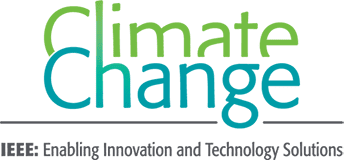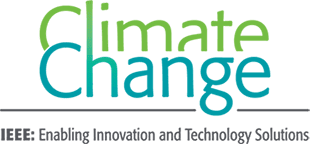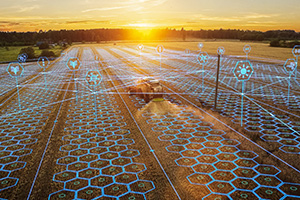Tech’s Role in Understanding Plant and Soil Health for Sustainable Farming
Precision agriculture is revolutionizing the way farmers approach crop management and soil health. By providing real-time data, smart technologies empower farmers to make informed decisions that contribute to more efficient agricultural practices.
NOTE: The views expressed here are solely those of the author and/or interview subject and do not represent positions of IEEE. Some references may require subscription to access content.
In the age of technological advancements, the Internet of Things (IoT) has emerged as a game-changer across various industries. One sector where its impact is particularly transformative is in agriculture. IoT is now playing a pivotal role in better understanding plant and soil health, enabling farmers to make informed decisions, and fostering more sustainable agricultural practices.
Farmers can better monitor and manage their fields with increased precision through the deployment of sensors and IoT devices. Deployed in the field, these devices gather real-time data on various parameters, which is then analyzed to provide actionable insights for optimizing crop production.
One of the key aspects of sustainable agriculture is maintaining soil health. Healthy soil is crucial for optimal plant growth and resilience against pests and diseases. Soil sensors placed in different parts of the field collect data on moisture levels, soil pH, and nutrient content. This information enables farmers to adjust irrigation schedules, apply fertilizers more efficiently, and take preventive measures.
Water scarcity is a significant challenge, and inefficient irrigation practices can contribute to water waste. Soil sensors, connected to the IoT network, provide information about the moisture levels in the soil, enabling the smart irrigation system to adjust the water supply, ensuring that crops receive the right amount of water at the right time.
Danilo Demarchi is founder of the IEEE Transactions on Agri Food Electronics that started publication in 2023. Dr. Demarchi is also founder of the IEEE Conference on Agri Food Electronics, which held its inaugural session in September 2023 in Torino, Italy.
Dr. Demarchi has done extensive research on plant health, and water is a critical aspect for productive agriculture. In one research study, he says, “In the last season, we demonstrated with our work that it was possible to save 50% water. We had a parallel study where the crops of three producers were irrigated in a section in the standard way. In the other section of the fields, we irrigated in an automatic way, getting the information from the soil. With 50% of the water, we were able to produce the same quantity and quality of fruits as the standard irrigation methods.”
Monitoring the health of crops is essential for early detection of diseases and pests [ 1 ]. Drones and smart cameras are employed to capture high-resolution images of crops [ 2 ]. These images are then analyzed using artificial intelligence algorithms to identify signs of diseases, nutrient deficiencies, or pest infestations. By detecting these issues at an early stage, farmers can take targeted and timely actions, reducing the need for excessive pesticide use and minimizing crop losses.
Dr. Demarchi says, “Currently, we are conducting some exploration with drones. I have a dedicated Ph.D. student investigating drone applications, particularly in utilizing them to collect data from sensors. The drones pass over the designated areas, precisely capturing the required information, which is then read using RFID (Radio-Frequency IDentification) technology. This methodology addresses a crucial concern: the energy consumption associated with data transmission. Traditional methods of transmission are notorious for their high energy consumption. By employing RFID, the drone can efficiently navigate around crops and trees, autonomously collecting sensor data without excessive energy expenditure.”
In his research as professor at the Polytechnico de Torino, Dr. Demarchi researched plant health. “Let the plants do the talking” [ 3 ] is a concept to help researchers better understand how to create the environment for successful growth. For instance, he says, “We strategically place sensors that allow us to monitor the water’s movement, whether it remains in the soil or is absorbed and utilized by the plant. Think of it as gauging the plant’s vital signs, akin to a heartbeat. The plant communicates its wellbeing through various signals, manifested in organic compounds and potential electrical activity, as ions traverse its structure. By assessing the ion status, we can gauge the plant’s activity. Furthermore, in the leaves, we observe the plant’s respiration, akin to breathing. The chlorophyll breathes, offering insights into the plant’s metabolic activity.”
IoT technologies are not just about gathering data; they are also about making sense of it. Advanced analytics, powered by machine-learning algorithms, process the vast amounts of data collected from sensors to generate actionable insights [ 4 ]. Predictive analytics can help farmers anticipate future trends in plant and soil health. For example, by analyzing historical data on weather patterns, soil conditions, and crop performance, farmers can make informed decisions about planting times, crop rotations, and other factors that influence agricultural productivity.
As the world faces the challenges of feeding a growing population in a changing climate, the role of IoT in understanding and enhancing plant and soil health is becoming increasingly vital for the future of sustainable agriculture.
[1] R. K. Lakshmi and N. Savarimuthu, “PLDD—A Deep Learning-Based Plant Leaf Disease Detection,” in IEEE Consumer Electronics Magazine, vol. 11, no. 3, pp. 44-49, 1 May 2022, doi: 10.1109/MCE.2021.3083976.
[2] G. Potrino, N. Palmieri, V. Antonello and A. Serianni, “Drones Support in Precision Agriculture for Fighting Against Parasites,” 2018 26th Telecommunications Forum (TELFOR), Belgrade, Serbia, 2018, pp. 1-4, doi: 10.1109/TELFOR.2018.8611876.
[3] U. Garlando, S. Calvo, M. Barezzi, A. Sanginario, P. M. Ros D. Demarchi, “A ‘Plant-Wearable System’ for Its Health Monitoring by Intra- and Interplant Communication,” IEEE Transactions on AgriFood Electronics, doi: 10.1109/TAFE.2023.3284563.
[4] K. Sumathi, K. Santharam and N. Selvalakshmi, “Data Analytics platform for intelligent agriculture,” 2018 2nd International Conference on I-SMAC (IoT in Social, Mobile, Analytics and Cloud) (I-SMAC)I-SMAC (IoT in Social, Mobile, Analytics and Cloud) (I-SMAC), 2018 2nd International Conference on, Palladam, India, 2018, pp. 647-650, doi: 10.1109/I-SMAC.2018.8653740.



